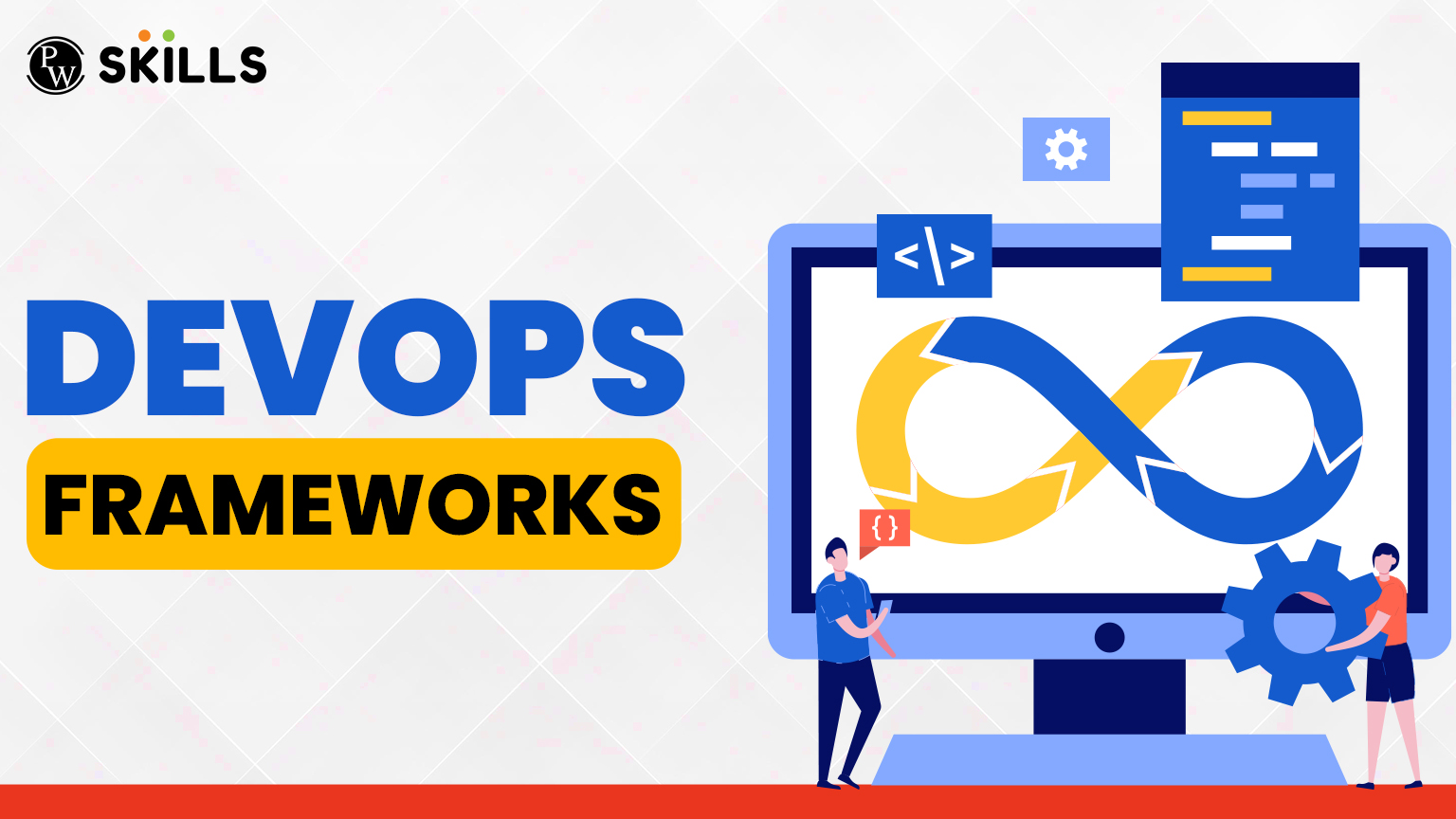Introduction: Let’s Decode DevOps
How do apps such as Netflix manage to magically self-update overnight without a mid-binge crash? The secret is the DevOps framework, which is a behind-the-scenes mechanism of keeping developers and operations folks synced. A cue for the tech-crazed student who wants to break into the industry or for the working professional currently fighting to put out flames of production bugs.
Lets explore DevOps frameworks, what they are, their importance, how you can build one even if you are not a wizard in technology-just plain talk, and no snake terms.
What Are DevOps Frameworks?
Lets say, You’re constructing a Lego city. On one side you have builders (developers) and on the other, traffic controllers (operations). In case of any confusion among them, there will be blockages in traffic, fallen buildings, and unhappy people. That’s what a DevOps framework prevents.
A framework is the structured plan by which dev and ops teams can work in harmony, including tools, flows-possibly most importantly, mutual understanding. These frameworks help speed efficiency, lessen friction, and foster an environment in which it is okay to try, to fail, to fix, and to improve-with others.
There’s no single model that both teams should follow. That’s the beauty of it. Your setup may look different from that of Netflix, and that’s perfectly fine.
Why Should You Care About DevOps Frameworks?
Let’s admit it about that one thing: DevOps without a DevOps framework is like juggling blindfolds. Everyone’s doing something, but in chaos. A strong DevOps framework brings that order. It instructs the team: here’s how we build, test, deploy, and monitor-no assumption, no last-minute scramble.
Imagine a workplace with real communication between the dev and ops folks, where codes fly towards production faster, and failures become stepping stones.
How to develop a solid DevOps framework?
Although a perfect recipe has not yet been made, there are some building blocks that appear in all strong configurations:
- Automation: Tool through the repetitive stuff from code merging to testing, and your healthcare team will focus more on real issues.
- CI/CD: For every change, there is a clear flow from integrating all into production and delivering it to everybody.
- DevOps Pipeline: Clear step-by-step that keeps track of the passage of code from the time it’s developed to when it’s deployed live.
- Monitorings and Feedback Loops: Early detected bugs had been recognized for possibilities of continuous improvement with real-time data.
- Robust DevOps Culture: Creating Openness, Collaboration, and Shared Ownership- without these, even the best tools fail.
So all the above form the backbone of effective frameworks in DevOps that can rise or bend to meet the needs of the team.
Establishing the DevOps Framework by Yourself
It is not difficult to set up a DevOps framework. This is how to go about it following these stepwise instructions:
- Examine Your Current Workflow: The first step in this process is to identify the bottlenecks, delays, and repetitive manual tasks. This gives a clear view of what needs to be worked on.
- Select Tools Suited to Your Team: Considering your team’s needs, start integrating automation tools such as Jenkins, GitLab CI, Docker, or Kubernetes.
- Envision Your Self-Contained DevOps Pipeline: You will design for the entire life cycle, encompassing planning, coding, building, testing, releasing, deploying, operating, and monitoring.
- Automate What Can Be Automated: From builds to tests to deployments, automate any repetitive steps so that fewer mistakes will happen to save time.
- Introduce Continuous Feedback Looping: Monitoring tools and alarm systems according to real-time faults to notify teams about their problems and running retrospectives frequently have to be implemented.
- DevOps Culture: Create a culture that promotes ownership, collaboration, and transparent communication within the team. All members should feel accountable for the success of the product.
This is the change from “my job” to “our goal.” That and only that ignites all DevOps frameworks into long-term effectiveness.
How a DevOps Course can Help You Level Up
Learning DevOps from ground zero can be bewildering. YouTube has fragments here and there, and you can easily get lost. A classroom-style DevOps course saves you from that predicament. You’re not only taught what to do but why you do it. You’ll become proficient with CI/CD, automation, containerization, and monitoring while learning how and why these relate to a DevOps infrastructure. If you’re looking at a career change or on-the-job skill enhancement, a good DevOps course converts theory into real hands-on confidence.
Why Choose PW Skills for Your DevOps Journey?
- Learn from industry pros who simplify even the toughest topics.
- Get hands-on experience using actual tools such as Jenkins, Docker, and Kubernetes.
- Get certified and stand out to recruiters looking for skilled DevOps talent.
PW Skills’ DevOps course is not merely a classroom course; it’s a springboard to real-world preparation. Whether you’re a college student or a corporate working professional, it enables you to create and work on your own DevOps frameworks with clarity and confidence.
FAQs
What is the difference between a DevOps framework and DevOps tools?
A DevOps framework is the overall strategy and workflow structure, while DevOps tools are the software components that support specific tasks within that framework.
Can I implement a DevOps framework without a technical background?
Yes, many aspects like communication, feedback loops, and process design are non-technical. With the right course, even non-tech professionals can contribute to a DevOps setup.
How long does it take to build an effective DevOps framework?
It depends on your team size and current maturity. Small teams can see results in a few weeks, while larger setups may need months of gradual rollout and adjustment.

